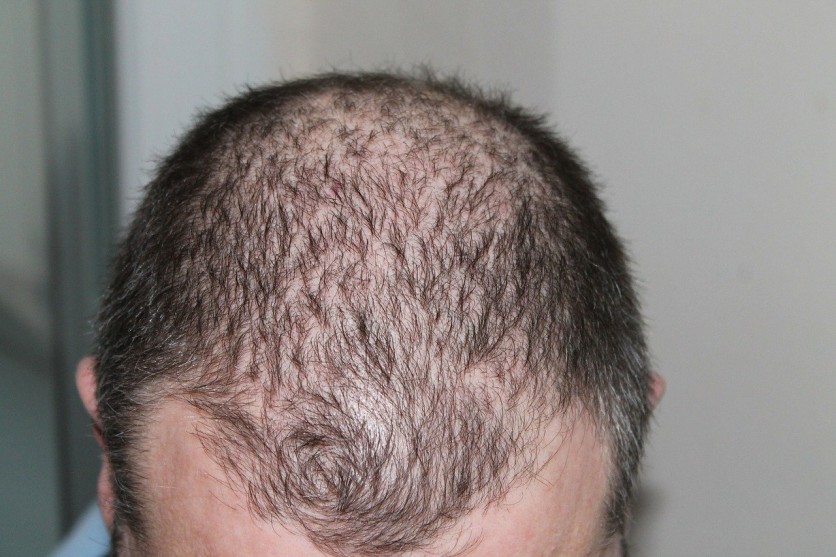
Your pillow has a fine coating of hair every morning, you recently sunburned your scalp, and your barber cuts your hair in record time. You're going bald, and there's nothing you can do about it, right? Not necessarily. Thankfully, there are several methods to combat hair loss, from medical interventions to practical solutions that you can do at home.
The Pharmaceutical Route
There are currently two FDA-approved medications on the market which are designed to combat hair loss. Minoxidil, commonly known by the brand name Rogaine, is a topical solution which is applied to the scalp twice daily, either as a spray-on foam or a liquid. The mechanism by which Minoxidil promotes hair growth is not well understood, but around 40% of men regain at least some hair after three months of use. It's relatively inexpensive and can be purchased as an over-the-counter medication. It's also well-tolerated, and any side-effects which do occur are generally quite minor.
Finasteride is a prescription-only oral medication commonly known by the brand names Proscar and Propecia. Originally designed to treat prostate cancer, it works decreasing the production of dihydrotestosterone (DHT) - a form of testosterone known to be a factor in male pattern baldness. Studies have shown that Finasteride reduces male pattern baldness by around 30% after six months of use. However, the drug does come with some possible adverse effects. Sexual dysfunction, excessive hair growth, and gynecomastia (breast development) have all been linked to Finasteride use. However, the incident rate is quite small and the adverse effects tend to be reversible. Finasteride is generally more expensive than Minoxidil and can only be purchased with a prescription from an authorized medical professional.
Both Minoxidil and Finasteride have the downside of only working while the drugs are present in your system. If you stop taking the medications, their effects will soon begin to wear off, and you will likely be back to your normal level of hair loss within three months. Both treatments also work much better as a preventative measure than a cure. They generally don't cause a significant amount of new hair growth to occur; rather, they stop existing hair follicles from becoming dormant. If you are considering taking either (or both) of these medications, the quicker you act, the better.
The Surgical Route
Hair transplants have something of an unjustified bad wrap, mostly stemming from the poor quality of transplants when the procedure was first developed. Hair transplants have come a long way, especially in the last decade or so. There are two main techniques to achieve a hair transplant currently on offer. The first method, called strip harvesting, is the oldest and best-known method. A strip of skin is cut from the back of the patient's head, which is usually unaffected by male pattern baldness. This strip of scalp is then cut into plugs of skin with hairs coming out of the top. The plugs are reinserted into the scalp by a surgeon over the areas where hair loss is most prominent in order to increase coverage. The wound where the skin was cut from is then sutured back together.
This method leaves the patient with a thin scar on the back of their head, which some people find unsightly. Also, the number of hairs that can be transplanted this way is limited, which is a problem for men who desire fuller hair coverage or have very severe baldness.
The second type of transplant procedure is known as Follicular unit extraction (FUE). An FUE procedure is similar to strip harvesting, but it involves the use of a device similar to a hole punch to extract the hair follicles, rather than cutting a large strip from one area. This allows the surgeon to take donor hairs from a larger area of the scalp, increasing the total number of hairs that can be harvested and lowering the trauma to the scalp. The result of this method is a faster, less-painful healing process, and a more natural looking head of hair. Modern FUE machines have significantly streamlined the process by automating hair extraction, which reduces the length of some procedures by several hours.
Most hair transplant patients take hair loss medication such as Finasteride after the procedure in order to maintain the hair they have.
Scalp Micropigmentation
It's becoming increasingly common for bald men to get artificial hair tattooed directly onto their scalp - a procedure known as scalp micropigmentation. Obviously, you can't get a full hair-do tattooed onto your head, but you can replicate the appearance of a freshly shaved buzz-cut. Tattooed hair stubble can look extremely realistic, and it's generally much less expensive than hair loss surgery or medication in the long run. The best thing about scalp micropigmentation is the fact it requires zero maintenance. As long as you keep your remaining hair as short, your head will look great every day of the week.
If you don't find any of these solutions to be suitable, you could always embrace your baldness and shave your hair off - either clipped short with guardless hair trimmers or clean shaven with a razor if you're brave. After all, studies have repeatedly shown that being bald does come with some social advantages. One study found that people consider bald men to be more dominant, confident, masculine, and about an inch taller than men with a full head of hair.
ⓒ 2025 TECHTIMES.com All rights reserved. Do not reproduce without permission.




